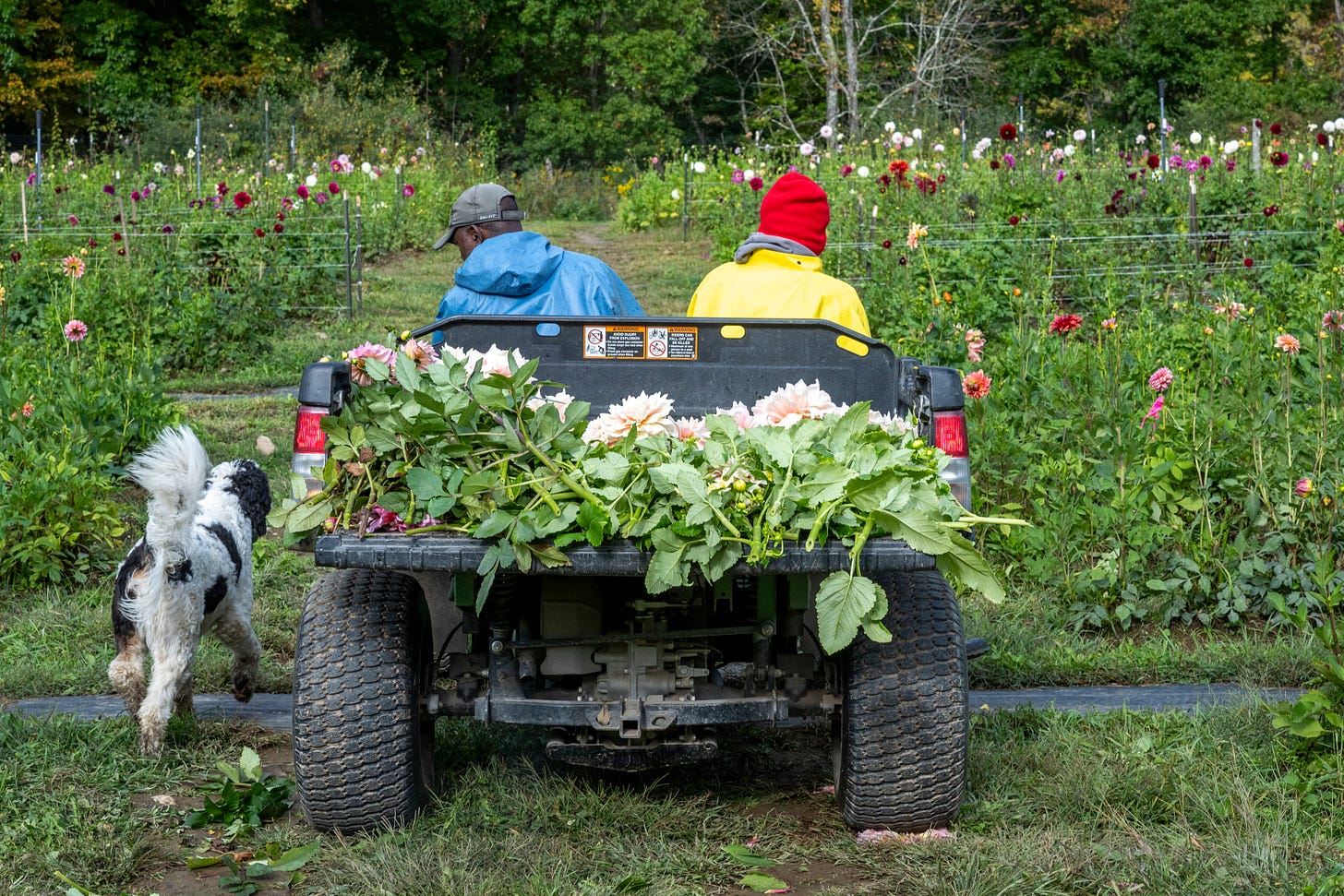It begins so quietly; you almost miss it.
The way one thing leans toward another. A vine finds a trellis. Roots, deep in the dark, trade minerals and messages through filaments of fungus. Bees pass softly between blooms. Wind carries pollen, carries seed. You never see the signal—only the answer. Nature doesn’t operate in solos. It works in ensembles, always.
There’s a passage in The Secret Garden where Mary Lennox begins to understand that most of what makes a garden beautiful is invisible. “There’s things goin’ on underground,” says Dickon, “a whole world o’ work an’ hum that no one ever sees.” And so it is.
This is what I think about when people compliment the farm and say, “You have such a good team.” They don’t know how much that means—how true it is, and how rarely it’s said out loud in a world that loves a single face to pin it all on. From the beginning, everyone told me to be the face of the farm. To step into the frame, hold the bouquet, sign the captions. But I never wanted that. There’s nothing inherently wrong with the impulse—it comes from a desire to connect. But for me, it was never the point.
This place has always been built by many hands. Some of them are visible. Some are not. The rhythm of the farm — the planting, the harvesting, the beauty — rises from many hands, many thoughts, many ways of moving through the day. We build it together. We grow in chorus.
Nature is the same. A flower might draw the eye, but it doesn’t rise on its own. It’s held there by a quiet web of things: pollinators, the bacteria that broke down last year’s leaf litter, the schedule of rain it did not choose. We praise the bloom, but we rarely praise the system that made the bloom possible.
The thing is, when systems begin to revolve around a single point — when everything pulls toward one voice or vision — it’s not just unsustainable. It’s exhausting. Growth becomes fearful. Others shrink back. The energy shifts. You see this in the garden when one species overtakes another and throws off the balance. You see it in human structures too, though it’s harder to name.
But when it’s working — really working — it feels like a woodland clearing: open and dappled. Each person knows where to step, when to speak, when to fall silent. Not because someone told them to, but because the rhythm is shared. And the beauty of it is that no one part has to hold everything. That’s what makes it feel possible. That’s what makes it grow.
There’s a line in Middlemarch about how the growing good of the world depends on people “who lived faithfully a hidden life, and rest in unvisited tombs.” Not everyone likes that line. Some find it too sad. But to me, it’s the opposite. It’s a reminder that the things that endure — the things that matter — often come from those who weren’t asking to be noticed. Who were building something with others, not for attention, but for the sheer rightness of it. Not in a sad way. In a true way. The idea that meaning doesn’t require an audience. That the most enduring systems — natural, human, or otherwise — just need care, consistency, and a willingness to be part of something larger than yourself.
This is what I’ve seen in the soil. This is what I’ve seen in my team. No one asking for credit. Everyone listening, lifting, leaning toward light.
This is how the world grows. In chorus.





Your posts are exceptional, and the Eliot quote is perfect. Thank you.
You did it again, love your thoughts and writings!